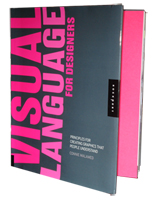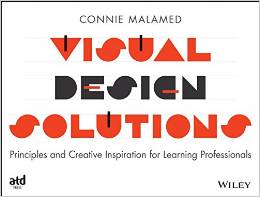
You already know that a typeface has its own personality. But do viewers who aren’t familiar with design pick up on typeface persona? And if they do, what characteristics do they perceive?
Communicating At Two Levels
Think of a typeface as communicating on at least two levels—the functional level and the semantic level. Functional communication is based on the letter’s form, which allows viewers to perceptually discriminate and identify each letter.
On the other hand, the semantic communication of a typeface evokes a response in the viewer as a result of its tone, mood and attitude. It provides a subtle meaning beyond the text itself. In the Elements of Typographic Style, Robert Bringhurst states it eloquently,
“The moment a text and a typeface are chosen, two streams of thought, two rhythmical systems, two sets of habits, or if you like, two personalities intersect.”
The Research: Viewers Do Perceive Typeface Personas
So how can one determine whether readers are affected by the personality of a typeface? Experimentally, a sample of subjects must consistently perceive a typeface as having the same persona. And this is exactly what occurred in studies conducted over the past 20 years.
In one milestone study, participants viewed 15 different typeface forms, which were presented in an alphabet format and in a sentence format. The viewers consistently described the 15 typeface forms as having unique personality attributes by selecting from 20 adjectives, such as: cheap, cold, confident, dignified, playful and professional.
The final analysis of responses showed that participants perceived and categorized the typefaces into three broader categories—Elegance, Directness and Friendliness—based on their semantic qualities rather than functional ones. For example, CounselorScript and Harrington both fit into the Elegance Group; Arial and Garamond were categorized in the Directness Group; and Bauhaus Md BT and Comic Sans MS fit into the Friendliness Group.
Bottom line: Non-design readers and viewers do perceive personality characteristics in typefaces. According to the study’s author, the results suggest that “visual language is analogous to verbal language in carrying connotations.”
Study reference: Brumberger, Eva. The Rhetoric of Typography. Technical Communication; May 2003.


{ 3 trackbacks }
{ 2 comments… read them below or add one }
And a recent study found that if text was easier to read, people were more likely to believe it, value it, and do it: “If it’s easy to read, it’s easy to do, pretty, good, and true.” http://www.thepsychologist.org.uk/archive/archive_home.cfm?volumeID=23&editionID=185&ArticleID=1629
Hi Karen,
Thanks for the link. That is an important study, isn’t it? And not surprising.
Connie